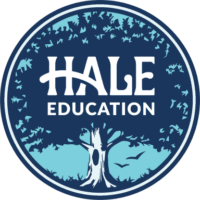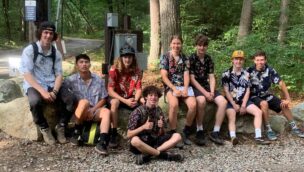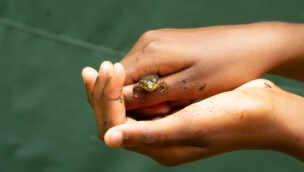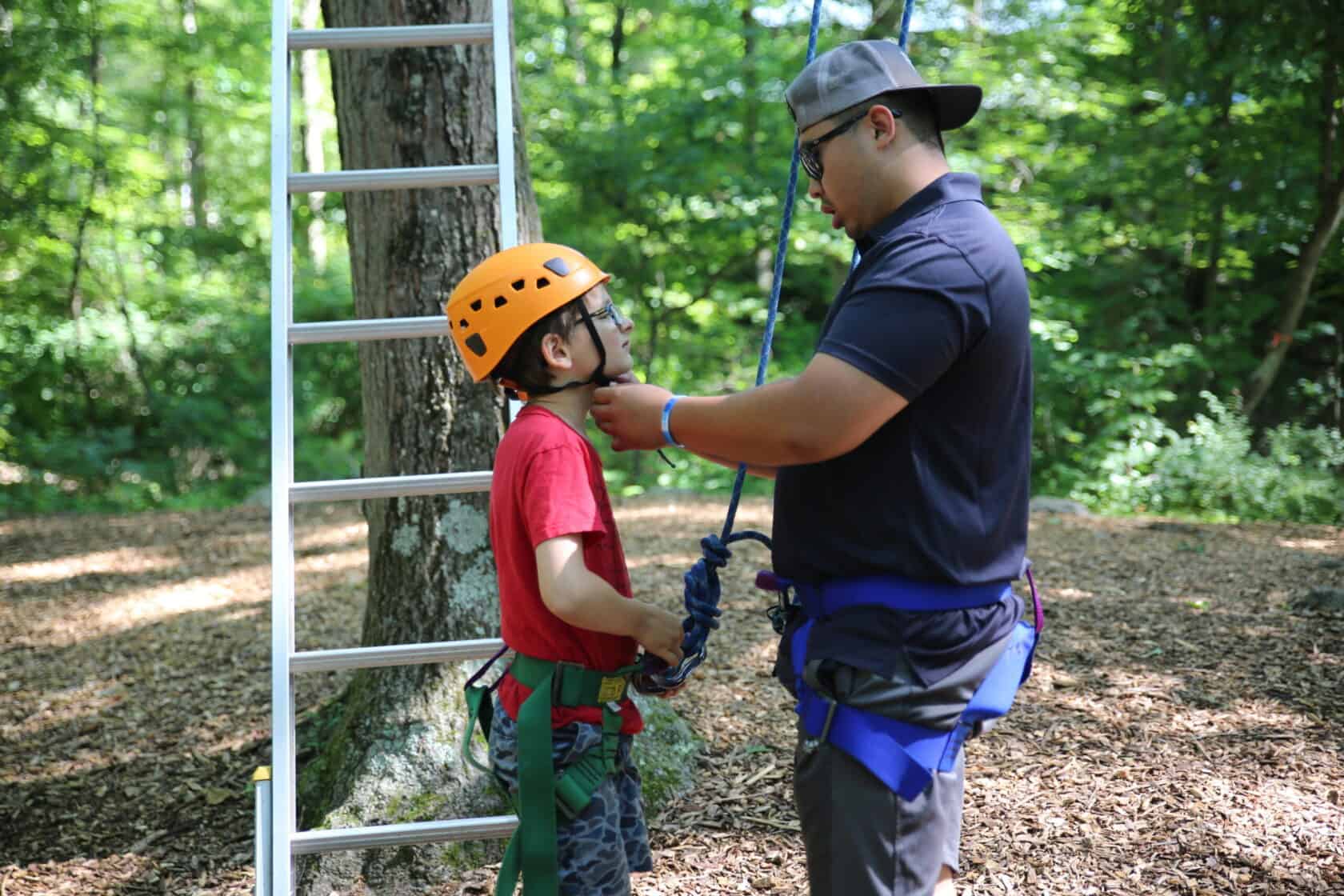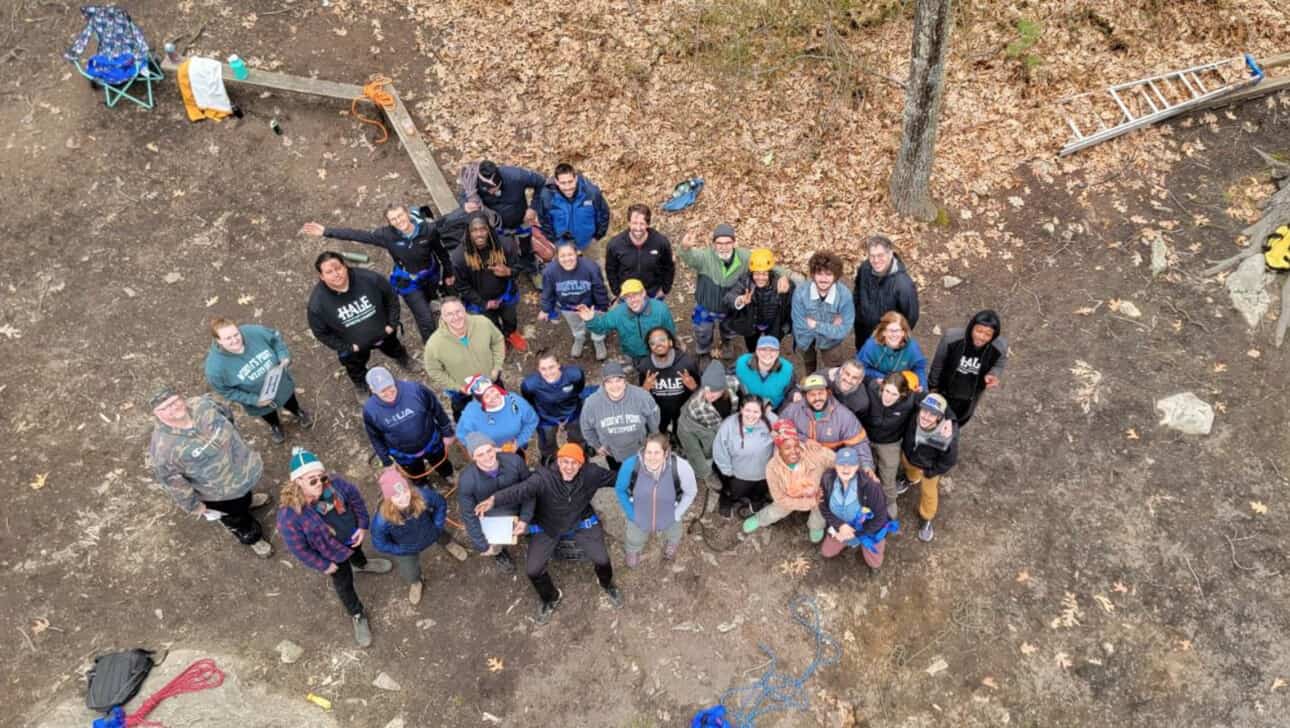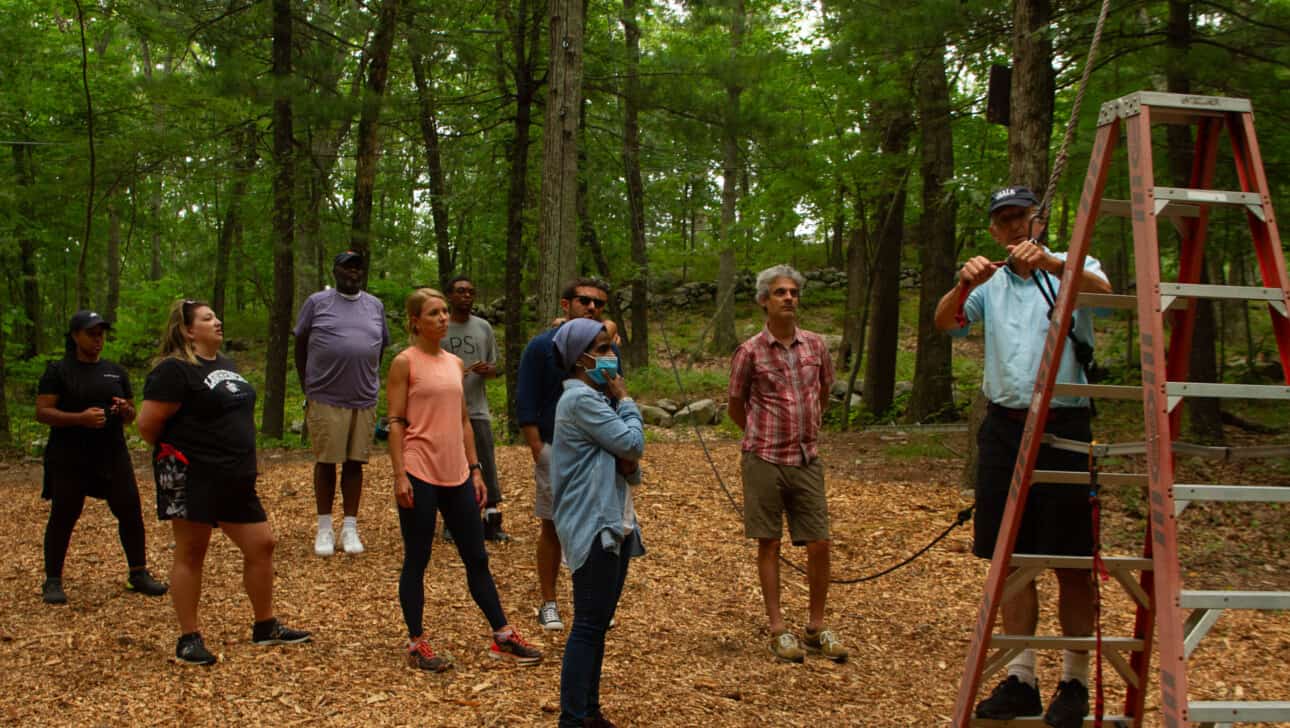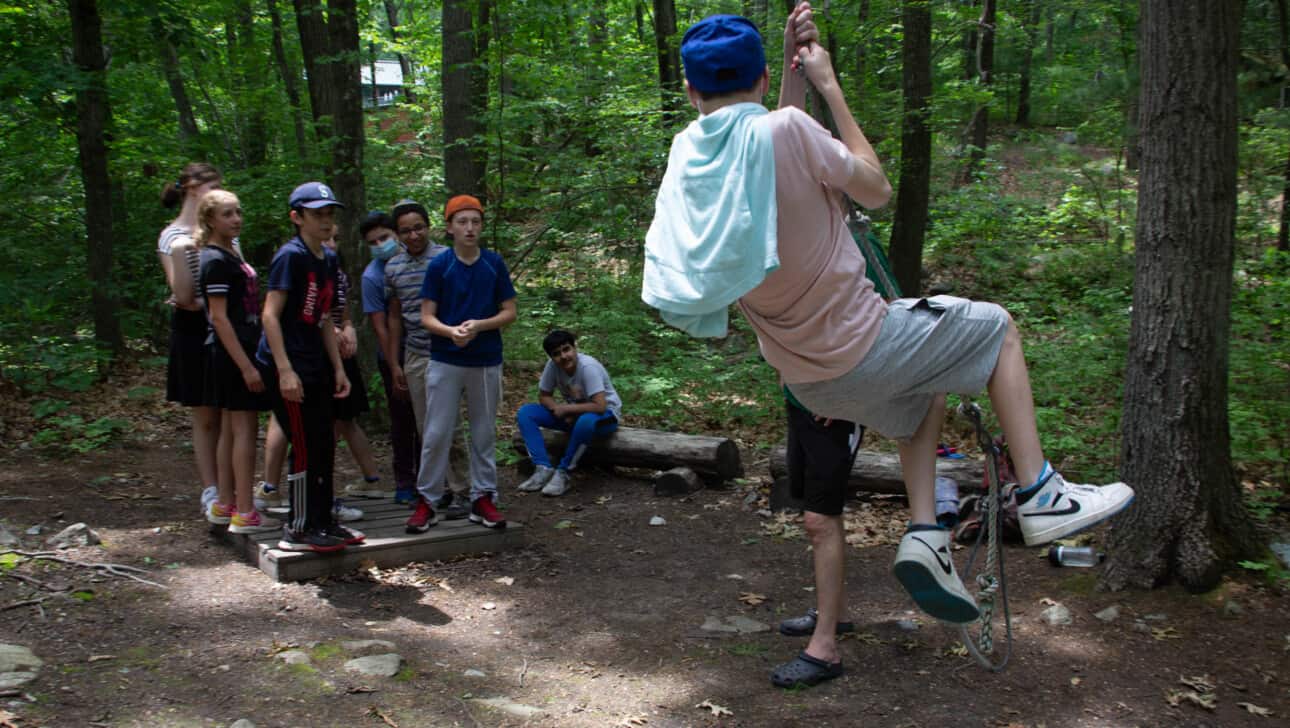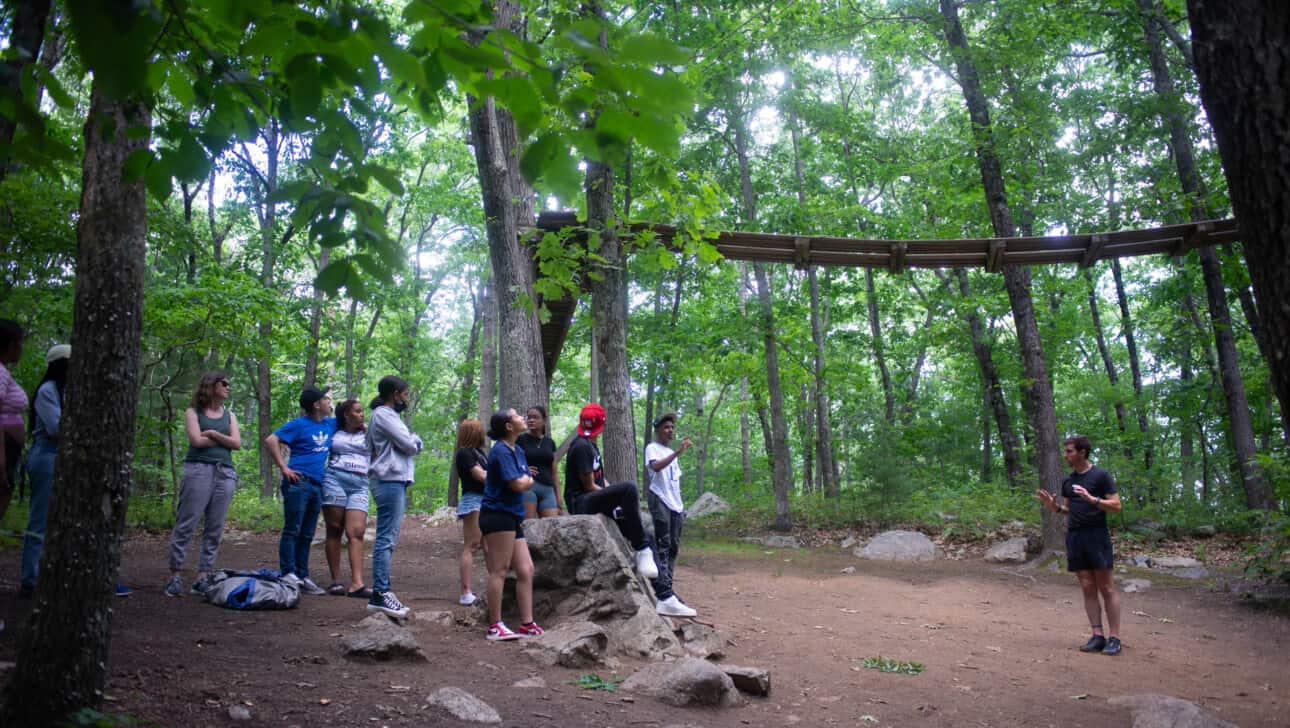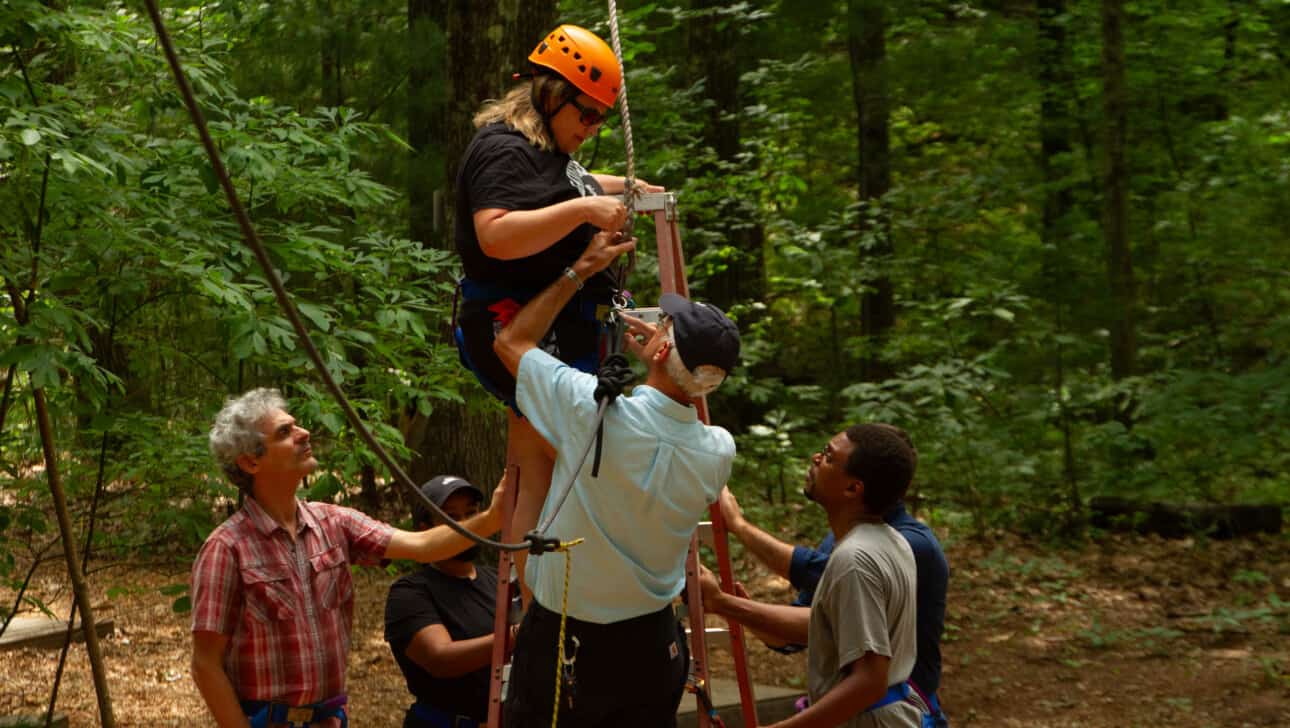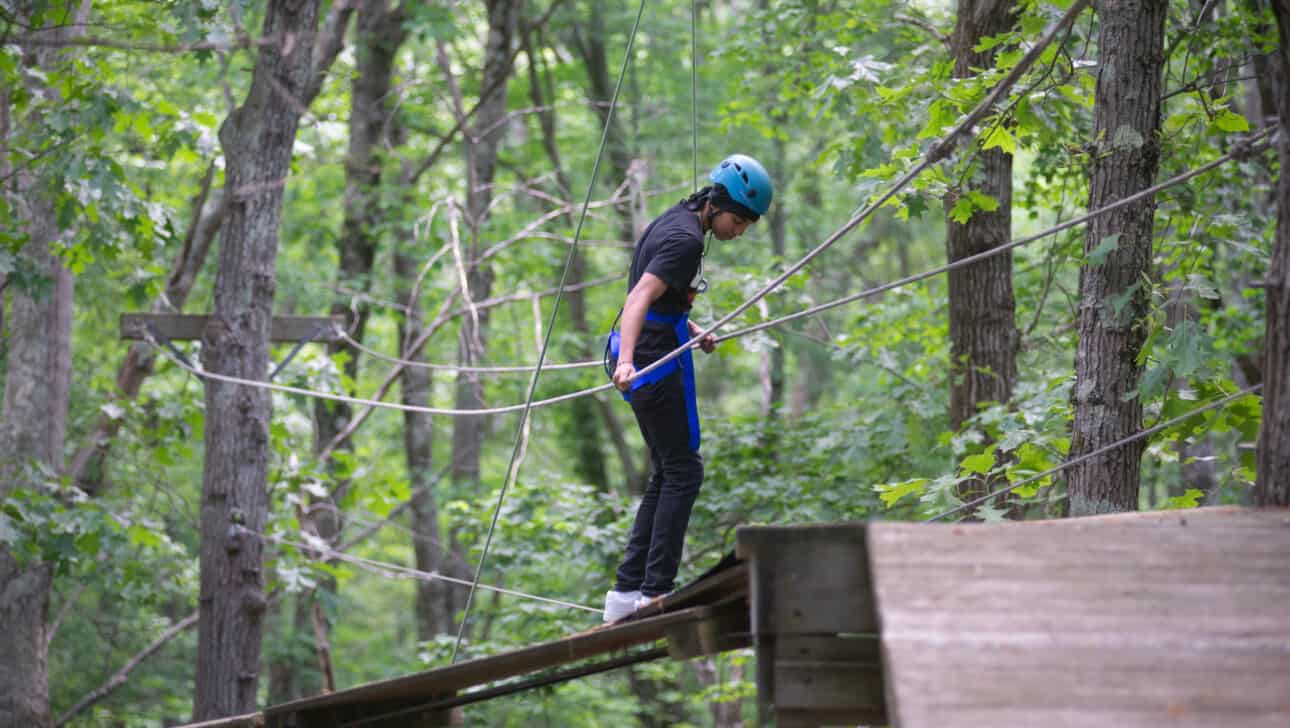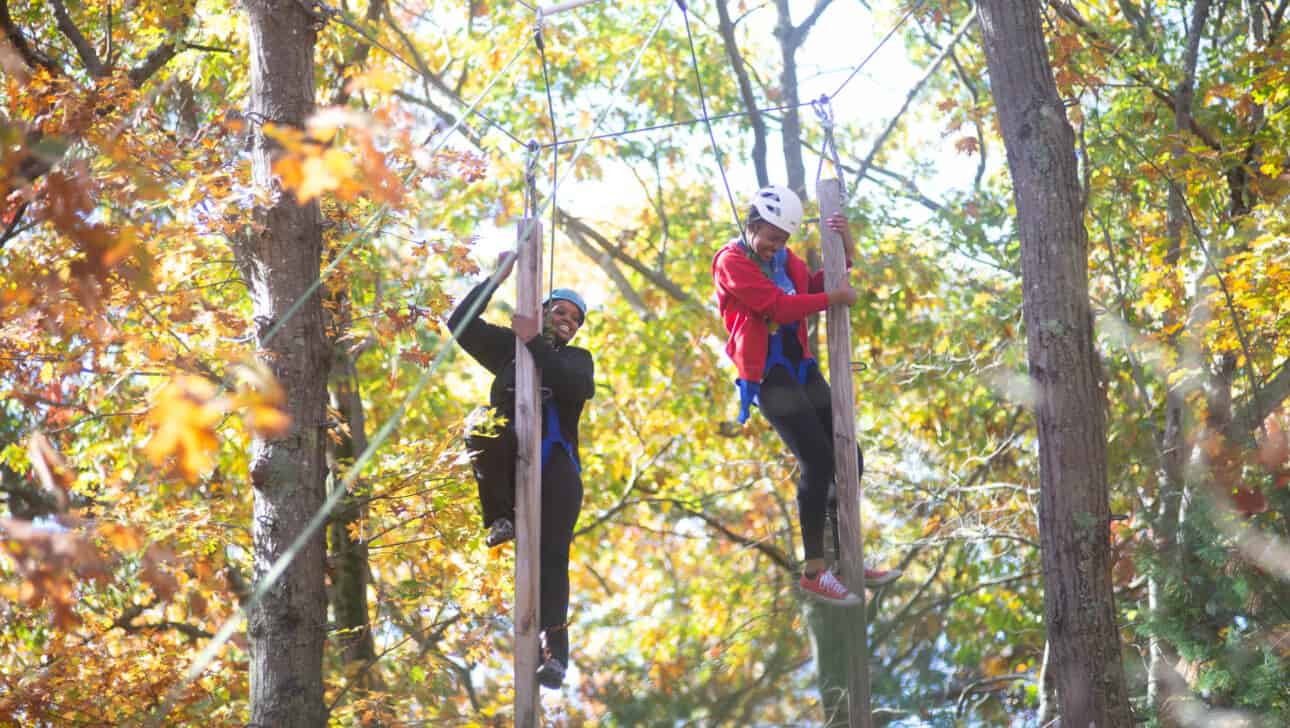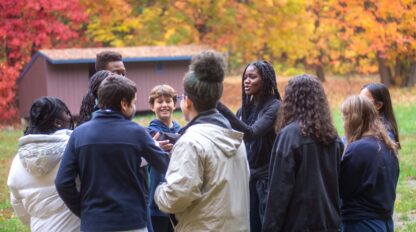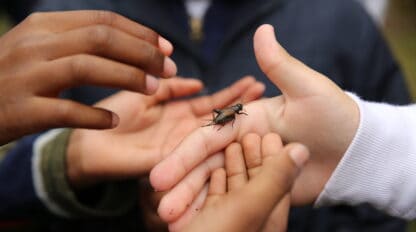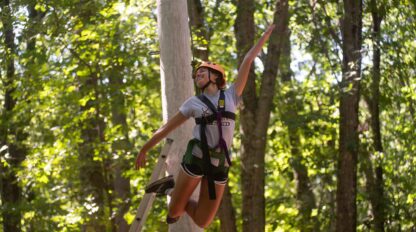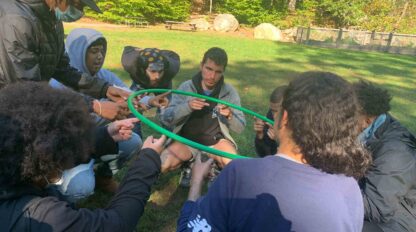Climb to New Heights
Hale’s accredited, living tree challenge courses are among our most popular activities. With 18 high ropes elements and 17 low built elements surrounded by natural beauty, it’s easy to see why. They’re a memorable way for our best-in-class facilitators to guide groups in creative brainstorming, community building, and more.
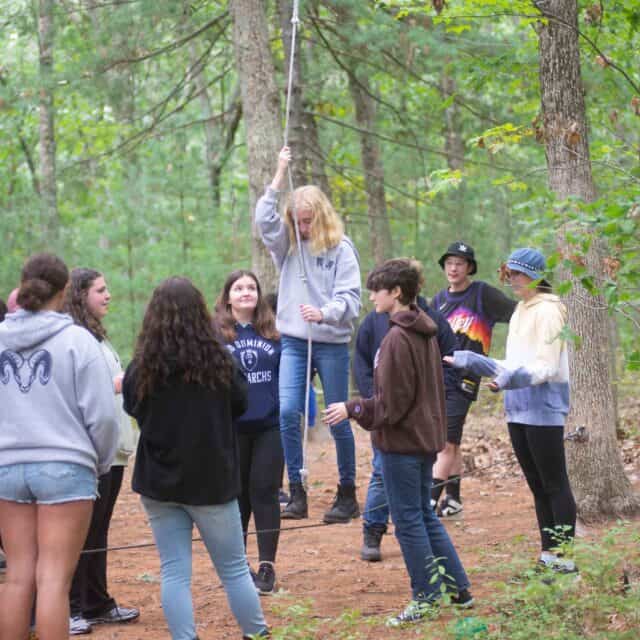
Living Tree Elements
Our challenge course elements are built into the natural environment at Hale. Unlike a pole course, which is typically built in an open field and open to the hot sun, a living tree course relies on existing trees and is sheltered by the forest canopy’s natural shade.
Sample Elements
Low Ropes
Low ropes activities take place on built elements, typically one or two feet above the ground. Participation is always prefaced by teambuilding activities that assess a group’s maturity and preparedness for higher levels of challenge. No helmets or harnesses are required. Low ropes participants must be at least 7 years old.
The group must cross a 15-foot gap between one wooden platform and another. First, participants have to figure out how to get a rope, which is (inconveniently) hanging in the middle of the gap. Once they have a plan, the team must ensure everyone swings over the gap without touching the ground or letting go of the rope. As each group member swings across, others help them get on and off the rope safely. This activity teaches problem solving, cooperation, empathy, and mindfulness.
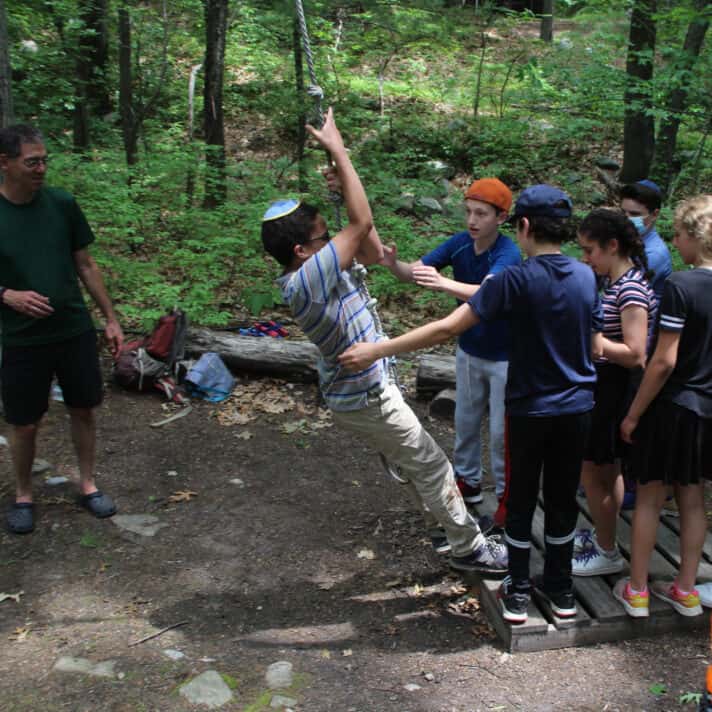
Low cables anchored between trees comprise this element, which challenges the group to traverse the entire length of a series without making contact with the ground. Handlines are available at various points to provide additional support. Learn more about the history of this element.
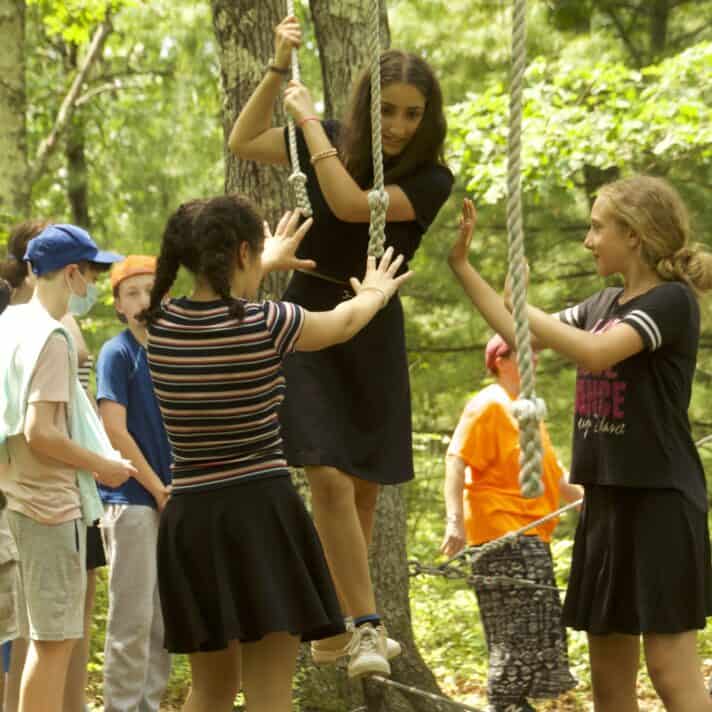
This element features a series of platforms. As the group stands together on each “island,” participants must figure out how to use boards to travel from one to the next without touching the ground.

Sample Elements
High Ropes
High ropes activities take place in the trees, anywhere from 15 to 40 feet above the ground. Although only one or two climbers are on belay at a time, high ropes elements are truly an experience for the whole team. High ropes participants must be at least 9 years old.
This specialty element challenges participants to climb a pole, stand on top of it, and then leap off of it to tag a ball suspended in the air. After that, their team safely lowers them back to the ground.

This ascending element supports two climbers at the same time. Participants use each other and the resources facilitators provide as they try to climb as far up the playpen as possible.
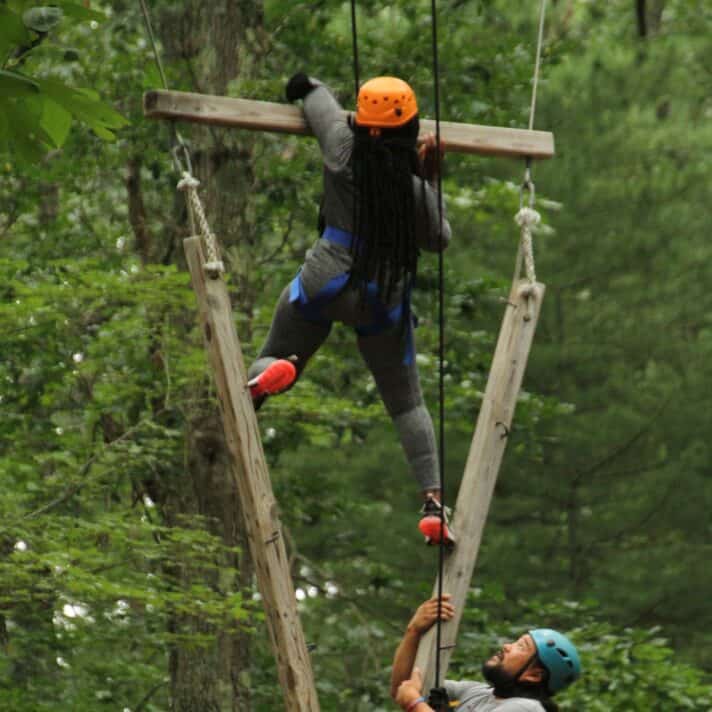
A participant climbs to height, and accesses a small wooden platform suspended in the air. The task for participants on the ground? Use long ropes to move additional platforms close enough to the climber so they can reach them and traverse a gap between two trees. Successful completion requires the entire team to communicate and cooperate.
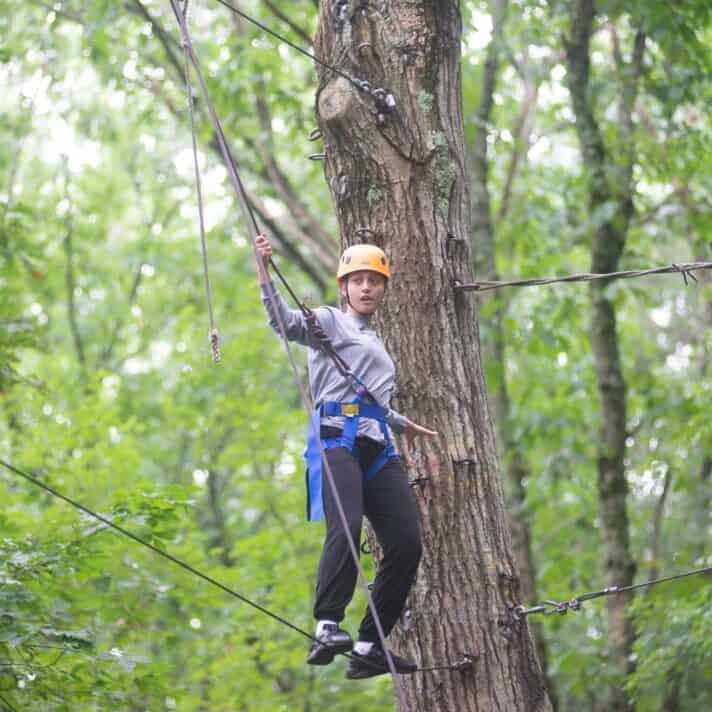
Accreditation & Certification
Our state-licensed courses meet the standards of the American Camp Association, are accredited by High 5 Adventure, and are inspected annually to meet Association for Challenge Course Technology codes. Our highly trained staff includes multiple Level 2-certified facilitators and challenge course managers.
Frequently Asked Questions
Every outdoor activity brings with it some level of risk, but it’s important to keep in mind the difference between actual and perceived risk. Challenge courses are designed to minimize “actual risk” (true danger) and inspire “perceived risk” (the sense that what you’re doing is daring) to make learning exciting and fun! Our staff is highly trained and our equipment is regularly inspected to make sure your experience meets all safety requirements.
It is okay to be afraid of heights. Our team will encourage you to step outside your comfort zone and try new things, but participants are never forced to do anything they don’t want to do. Other roles are available for participants who aren’t ready to climb so they can contribute to the team’s success.
Participants should always dress for the weather. If rain is predicted, bring rain gear. Dress in layers. Every participant must wear closed-toed shoes. Everyone should bring a refillable water bottle, snack or lunch depending on program duration, a smile, and a willingness to learn.
We don’t like to set weight limits; each person is assessed individually to ensure all safety equipment fits properly and can perform as expected. Participants who have limited mobility can participate in most teambuilding activities, and we have multiple high ropes elements that are accessible for people with disabilities. People’s needs are different, and we work with every group to meet them so everyone enjoys their time at Hale.
Our programs run rain or shine. We ask participants to dress for the weather, and we have covered spaces where activities can take place. Unless there’s thunder or lightning, high ropes elements generally run during inclement weather.
Challenge Course programs are often the “next step” after Teambuilding programs; once group dynamics are established, low and high ropes elements provide a new level of challenge and excitement. Teambuilding primarily focuses on developing connections and trust—in fact, our Challenge Course facilitators often use teambuilding activities to prepare groups for low and high ropes elements! Field Trips are typically grounded in schools’ academic curricula and lean heavily on Hale’s natural resources to enhance subject matter learning for students.
Climb Away
Let’s connect about your group’s goals and how we can help you accomplish them. Submit your information below and a staff member will follow up. You’ll also receive our monthly eNews.
Learn More! Sign up for Emails

